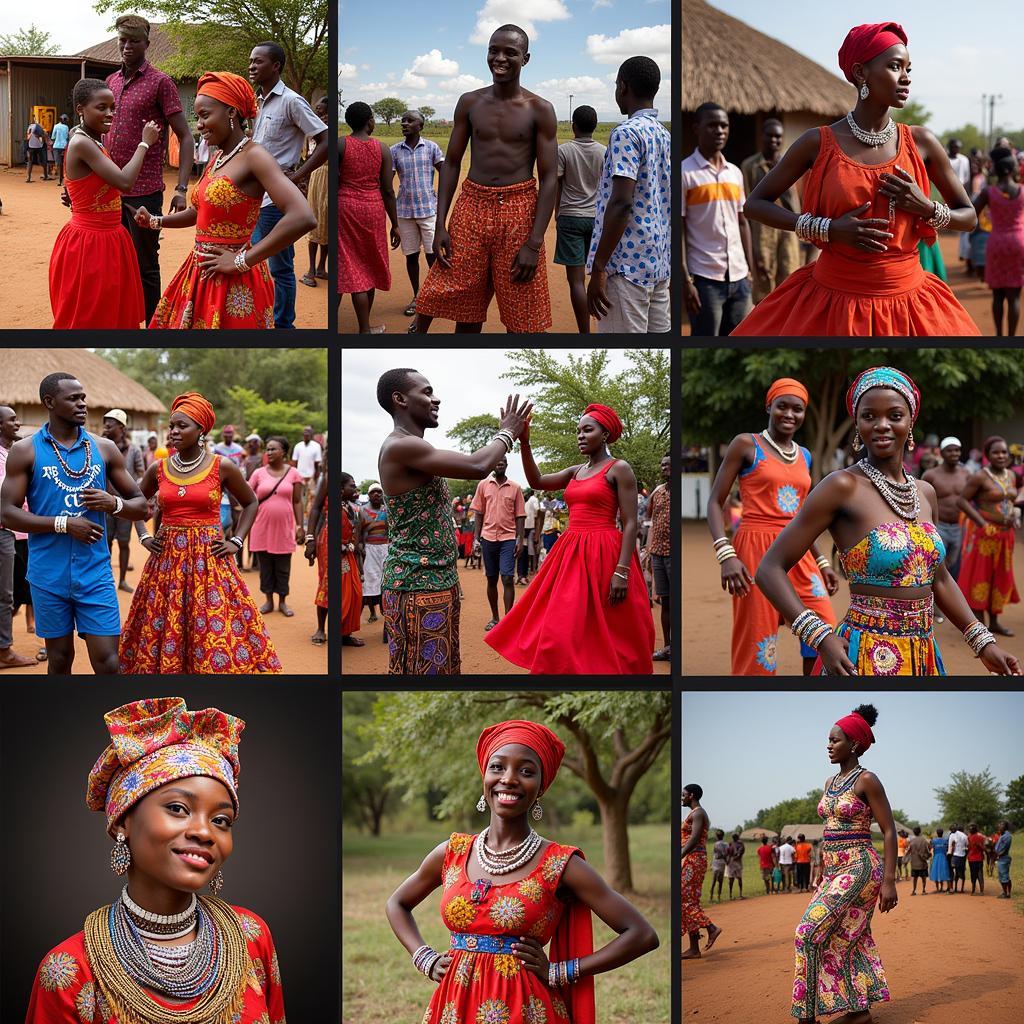The Rich History and Vibrant Beauty of African Indigo Cloth
African Indigo Cloth, a textile steeped in tradition and artistry, has captivated the world with its deep blue hues and intricate patterns. For centuries, this cloth has held immense cultural and spiritual significance across various African communities, serving as a symbol of identity, status, and heritage. From its ancient origins to its contemporary interpretations, African indigo cloth continues to inspire designers, artists, and fashion enthusiasts alike.
The Fascinating Origins of African Indigo Dye
The vibrant blue color of African indigo cloth comes from the leaves of the indigo plant, known scientifically as Indigofera. Native to tropical regions of Africa, Asia, and the Americas, this plant has been used for thousands of years to create a natural dye that produces rich, long-lasting blues. In Africa, evidence of indigo dyeing dates back to ancient Egypt, where it was used to color textiles and create elaborate body art.
Across the continent, different communities developed unique techniques for cultivating indigo plants, extracting the dye, and creating intricate patterns on cloth. These techniques, often passed down through generations, have become an integral part of local traditions and cultural identity.
Symbolic Meanings and Cultural Significance
African indigo cloth is not merely a beautiful textile; it holds deep cultural and spiritual significance. The color blue is often associated with royalty, power, and protection. In many African cultures, indigo cloth is worn for special occasions, ceremonies, and rituals. For example, among the Yoruba people of Nigeria, indigo-dyed cloth known as “adire” is worn by brides and grooms as a symbol of fertility and prosperity.
In some communities, indigo cloth is believed to possess spiritual powers and is used in traditional healing practices. The intricate patterns often found on indigo textiles can also hold symbolic meanings, representing ancestral spirits, proverbs, or historical events.
From Traditional Garments to Modern Fashion
African indigo cloth has long been used to create a wide range of garments and textiles, including clothing, headwraps, blankets, and wall hangings. The specific styles and patterns vary widely from region to region, reflecting the diversity of African cultures and artistic traditions. Some of the most well-known types of African indigo cloth include:
- Adire: This Yoruba indigo-dyed cloth is characterized by its intricate resist-dye patterns, created using various techniques such as tying, stitching, and applying starch paste.
- Bògòlanfini: This mud-dyed cloth from Mali is known as “mud cloth” in English. The intricate designs are created by applying fermented mud to the fabric, which reacts with the indigo dye to create unique patterns.
- Kente: This brightly colored, handwoven cloth from Ghana is often made with strips of indigo-dyed fabric woven together with other colors and patterns.
In recent years, African indigo cloth has experienced a resurgence of popularity in the global fashion industry. Designers around the world are incorporating this unique textile into their collections, creating stunning garments and accessories that celebrate African heritage and craftsmanship.
Where to Find and Care for African Indigo Cloth
If you are interested in purchasing African indigo cloth, there are several options available:
- Online retailers: Numerous online shops specialize in selling African textiles, including indigo cloth. Be sure to choose a reputable retailer that provides detailed information about the origin and authenticity of the fabrics. You can find authentic African attire online from Omenka.
- Local markets and craft shops: If you are traveling to Africa, visiting local markets and craft shops is a great way to find unique and authentic indigo textiles. Be prepared to haggle with vendors and don’t be afraid to ask about the history and significance of the fabrics.
- African fabric distributors: For larger quantities or wholesale purchases, you can contact African fabric distributors who specialize in indigo cloth.
Caring for African indigo cloth is relatively easy. It is generally recommended to hand wash or machine wash on a gentle cycle with cold water. Use a mild detergent and avoid bleach or harsh chemicals. Hang to dry in the shade to prevent fading.
Conclusion
African indigo cloth is a testament to the rich cultural heritage and artistic ingenuity of African communities. From its ancient origins to its contemporary interpretations, this textile continues to fascinate and inspire. Whether you are drawn to its vibrant blue color, intricate patterns, or deep cultural significance, African indigo cloth is a timeless treasure that deserves to be celebrated.
FAQs about African Indigo Cloth
1. What is the difference between indigo and blue dye?
While both indigo and blue dye produce blue hues, indigo is a natural dye derived from the indigo plant, whereas blue dye can be either natural or synthetic. Indigo dye produces a rich, deep blue color that is known for its longevity.
2. Is African indigo cloth expensive?
The price of African indigo cloth can vary depending on factors such as the origin, quality, and intricacy of the fabric. Handwoven, hand-dyed textiles tend to be more expensive than mass-produced ones.
3. How can I incorporate African indigo cloth into my wardrobe?
African indigo cloth can be incorporated into your wardrobe in various ways. You can wear indigo-dyed clothing, such as dresses, shirts, skirts, and pants. You can also accessorize with indigo scarves, headwraps, bags, and jewelry.
4. Is African indigo cloth sustainable?
Indigo is a natural dye that is biodegradable and environmentally friendly. However, it is important to source African indigo cloth from ethical and sustainable producers who use responsible dyeing practices and fair labor standards.
5. Can I wash African indigo cloth with other clothes?
It is generally not recommended to wash African indigo cloth with other clothes, especially during the first few washes, as the dye may bleed. It is best to wash indigo textiles separately to prevent color transfer.
6. What are some other names for African indigo cloth?
African indigo cloth is known by various names depending on the region and culture. Some other common names include adire, bògòlanfini, kente, and shibori.
7. What is the best way to store African indigo cloth?
It is best to store African indigo cloth in a cool, dry place away from direct sunlight. You can fold the fabric or hang it on a padded hanger to prevent wrinkles.
We hope these FAQs have answered some of your questions about African indigo cloth. If you have any other questions, feel free to reach out to us.
More Resources:
For any assistance, please contact us at +255768904061, email us at [email protected], or visit us at Mbarali DC Mawindi, Kangaga, Tanzania. Our customer service team is available 24/7.

